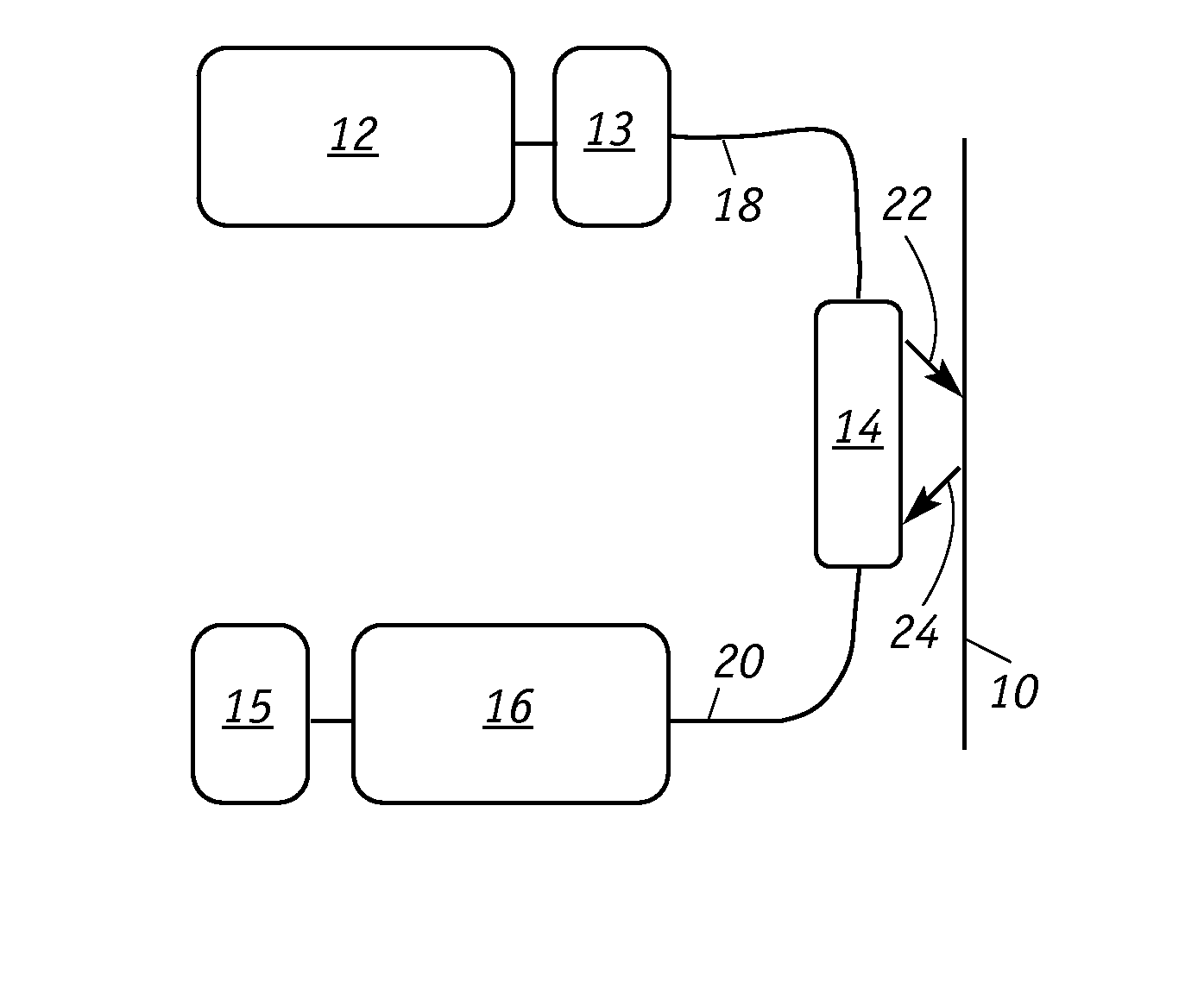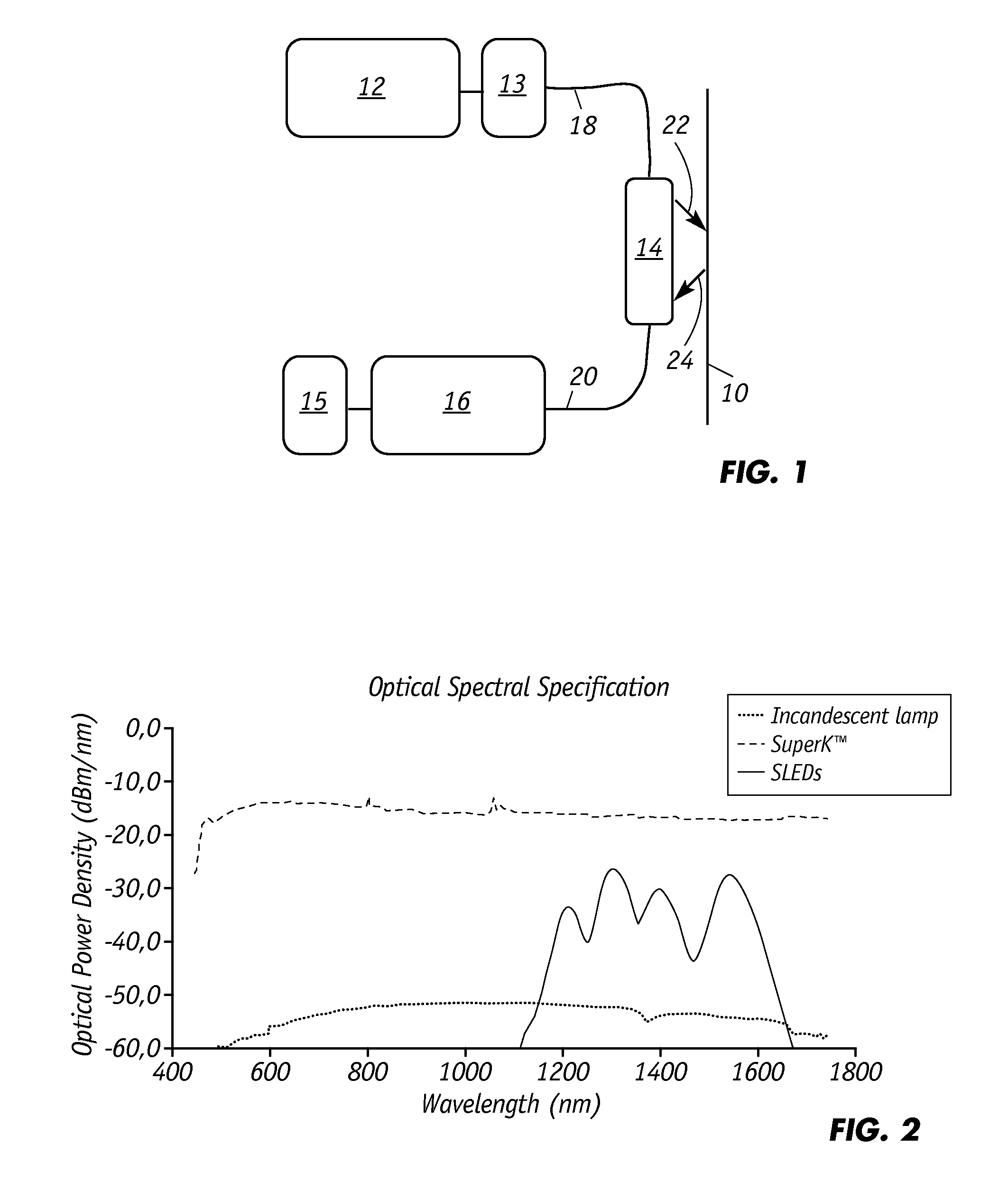Fiber optic sensor utilizing broadband sources
a fiber optic sensor and fiber optic technology, applied in the direction of optical radiation measurement, instruments, spectrometry/spectrophotometry/monochromators, etc., can solve the problems of limited coarse spectral resolution, limited wavelength range, and affect the quality of paper produced
- Summary
- Abstract
- Description
- Claims
- Application Information
AI Technical Summary
Benefits of technology
Problems solved by technology
Method used
Image
Examples
Embodiment Construction
[0035]The present invention is directed to a fiber optic sensor system for detecting properties of a composition especially material that is in the form of a film, web or sheet. While the sensor system will be illustrated in measuring properties of paper, it is understood that the sensor system can be employed to measure the presence and content of a variety of spectroscopic measurable components in a number of different materials including, for example, coated materials, plastics, fabrics, and the like.
[0036]FIG. 1 illustrates a sensor system of the present invention that is particularly suited for measuring parameters of a sheet of material 10 such as paper. The sensor system includes a high brightness radiation source 12, sensor or optical head 14, a radiation detector 16 and signal processor, e.g., computer, 15. Detection light from high brightness radiation source 12 is delivered to the sensor head 14, which is preferably mobile, through a fiber optic radiation delivery system ...
PUM
 Login to view more
Login to view more Abstract
Description
Claims
Application Information
 Login to view more
Login to view more - R&D Engineer
- R&D Manager
- IP Professional
- Industry Leading Data Capabilities
- Powerful AI technology
- Patent DNA Extraction
Browse by: Latest US Patents, China's latest patents, Technical Efficacy Thesaurus, Application Domain, Technology Topic.
© 2024 PatSnap. All rights reserved.Legal|Privacy policy|Modern Slavery Act Transparency Statement|Sitemap



